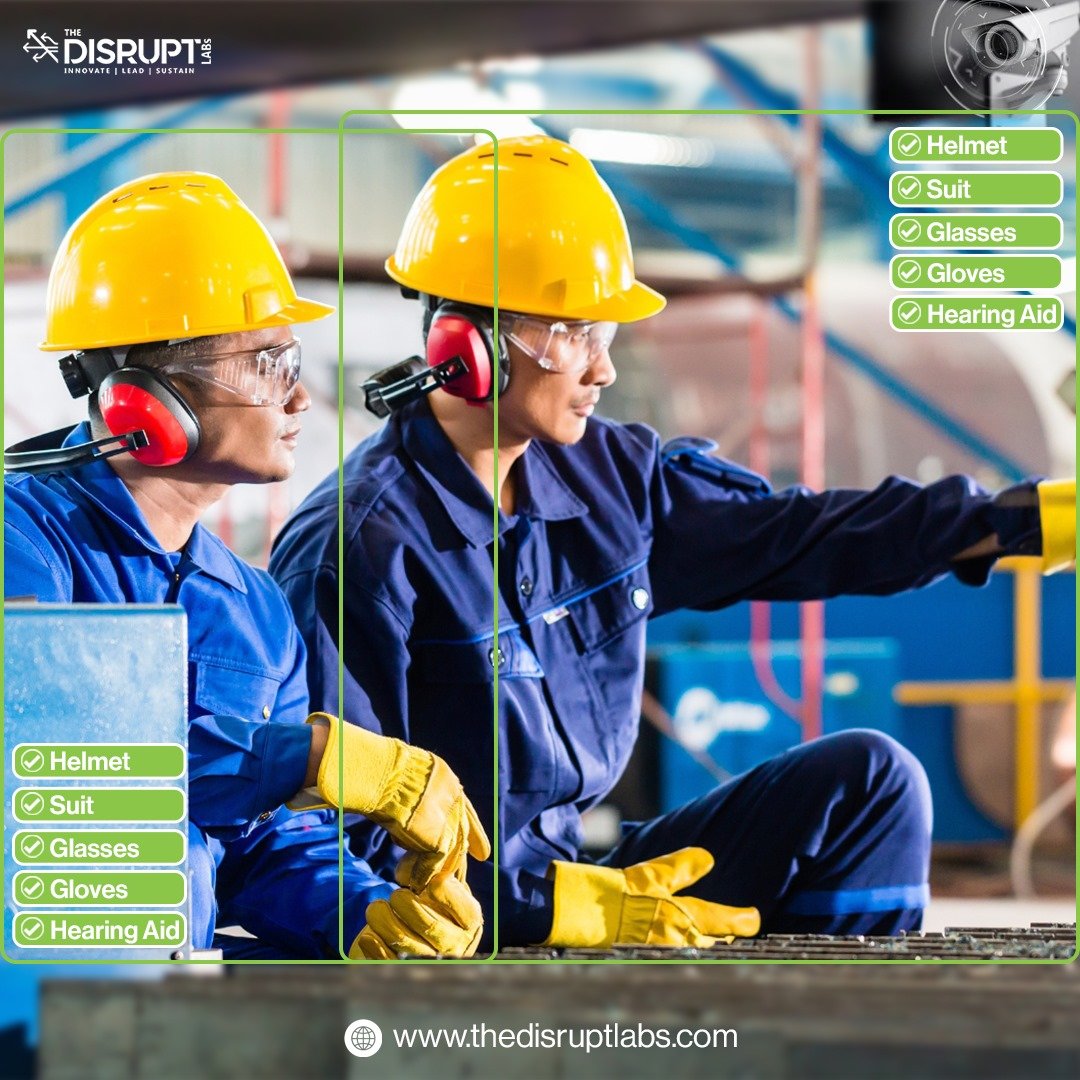AI Surveillance Enhances Workplace Safety
At The Disrupt Labs, we specialize in developing innovative Computer Vision AI solutions specifically for industrial safety. Our technology enables organizations to implement advanced surveillance systems that automatically detect risks, ensure compliance with safety protocols, and provide real-time insights into workplace safety.
In many industries, workplace safety efforts can reach a plateau. Even with strict safety procedures in place and regular risk assessments being conducted, it’s frustrating when the number of incidents doesn’t seem to decrease. This can leave organizations feeling stuck and searching for new strategies to improve safety and protect their workers. This is a common challenge in fields that emphasize occupational health and safety. Fortunately, the integration of AI-powered computer vision with CCTV systems offers an innovative way to break through this plateau and create a safer work environment.
Before OSHA was established, the U.S. had about 14,000 workplace fatalities each year, which decreased significantly over the decades. However, even with these improvements in safety regulations, the decline in workplace accidents has slowed in recent years. By using computer vision technology and CCTV cameras, businesses can enhance their ability to identify risks in real time, ensure compliance with PPE equipment regulations, and stay ahead of OSHA standards.
How AI-Powered CCTV Enhances Workplace Safety
Computer vision integrated with CCTV systems benefits AI in analyzing live footage and detecting potential risks before they escalate into accidents. Here’s how AI is transforming safety in various industries:
1. Real-Time Hazard Detection Using CCTV
Traditional safety inspections often miss risks that develop between assessments. AI-powered CCTV systems can monitor workplace environments 24/7 and detect hazards as they emerge, from chemical spills to machine malfunctions. In industries like construction, where fall protection is critical, AI can identify when workers are at risk and send immediate alerts to supervisors.
For instance, in a warehouse setting, AI-enabled CCTV can detect obstructed walkways or spilled materials that could lead to slip-and-fall incidents, helping to prevent injuries that lead to lost time injury cases.
2. Ensuring PPE Compliance with AI
Ensuring consistent use of PPE equipment is a vital part of any workplace safety program. AI powered CCTV systems can automatically monitor workers to ensure they are wearing the required protective equipment such as helmets, gloves, and safety glasses.
This AI-enhanced monitoring helps enforce OSHA regulations by detecting instances of non compliance in real time and providing feedback for corrective action. As a result, companies can avoid costly OSHA violations and promote a stronger safety culture.


3. Enhancing Electrical Safety and Ergonomics
In workplaces where electrical safety is a major concern, AI-based CCTV can identify electrical risks, such as exposed wiring or malfunctioning equipment. This reduces the likelihood of electrical accidents, which are common causes of serious injuries.
Additionally, AI-powered CCTV systems can monitor for issues related to warehouse ergonomics.
Improper lifting or repetitive tasks can lead to musculoskeletal injuries. AI can alert management
to ergonomic hazards, enabling them to make adjustments before employees experience long-term
harm.
4. Improving Safety in High-Risk Industries
Industries such as construction, chemical processing, and mining face unique hazards that require strict adherence to safety operating procedures. AI-powered CCTV systems help these industries comply with OSHA standards by continuously monitoring for risks such as equipment malfunctions, PPE violations, and unsafe working conditions.
For example, in the construction sector, AI systems can monitor workers on scaffolds or operating heavy machinery, ensuring compliance with fall protection video guidelines and alerting safety officers when risks are detected.
5. Data-Driven Safety Insights and Risk Assessment
One of the biggest advantages of using AI-powered computer vision in workplace safety is the ability to gather and analyze vast amounts of data. By studying patterns from safety video footage, AI systems can offer valuable insights into job hazard analysis and suggest improvements to safety protocols.
These insights allow companies to perform more accurate risk assessments and update their safety services proactively. The data collected can also help organizations create customized safety tips and training programs, improving overall safety awareness and helping prevent incidents before they happen.
Conclusion
Breaking the safety plateau is now achievable with the help of AI-powered computer vision and CCTV technology. These systems offer real-time hazard detection and proactive risk management, from ensuring PPE compliance to identifying ergonomics safety topics. By integrating AI into their safety programs, businesses can significantly reduce accidents, improve workplace safety, and stay ahead of OSHA regulations.
FAQ's
AI-powered CCTV helps by continuously monitoring for hazards, ensuring PPE compliance, and providing real-time alerts for unsafe conditions, helping businesses adhere to OSHA regulations.
Yes, AI-enhanced CCTV systems can detect electrical safety hazards like exposed wires or faulty equipment, reducing the risk of electrical accidents.
AI systems analyze CCTV footage to ensure that workers are consistently using their PPE equipment and immediately alert supervisors when violations occur.
AI can monitor workstations and employee behavior for ergonomic risks, helping companies improve warehouse ergonomics and reduce long-term injuries.
The Disrupt Labs provides AI-driven solutions that monitor critical areas, generate real-time alerts for safety teams, and support the implementation of effective safety measures.

